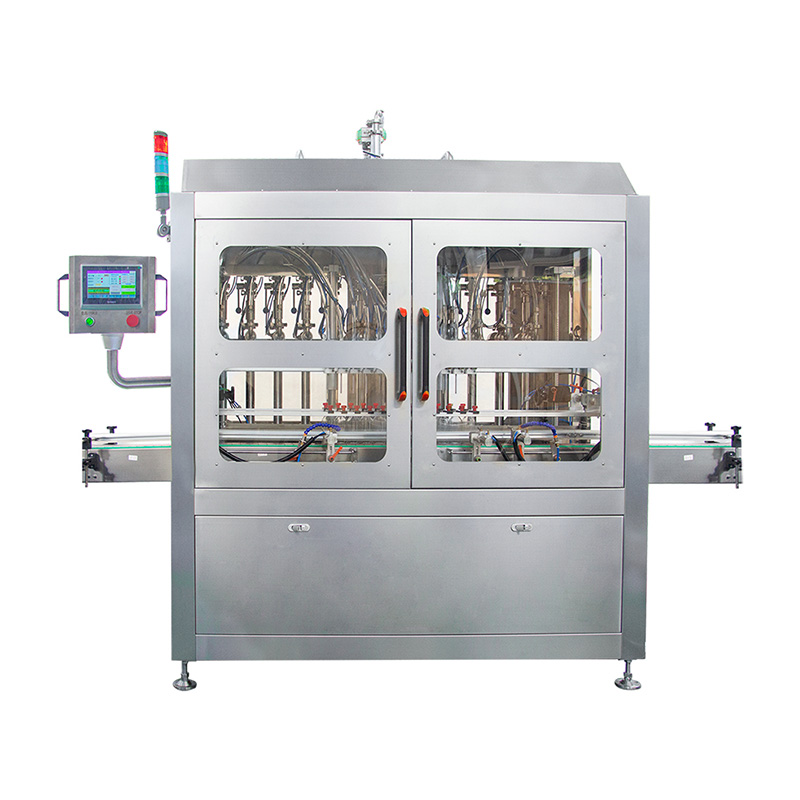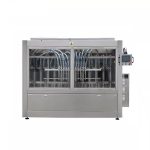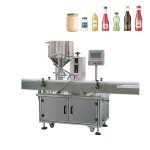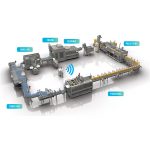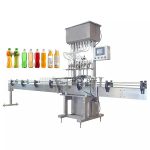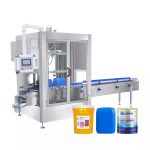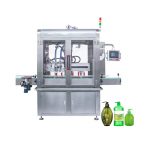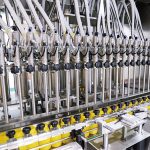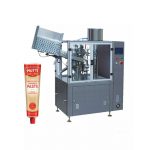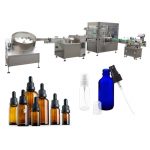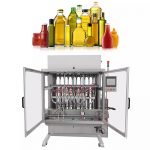A liquid filling machine is a mechanical device used to dispense precise amounts of liquids into containers or packages. There are many types of liquid filling machines, including manual, semi-automatic, and fully automatic machines. In this guide, we will focus on four head liquid filling machines, which are commonly used in the food, pharmaceutical, and cosmetics industries.
What is a four head liquid filling machine?
A four head liquid filling machine is a type of automatic filling machine that is equipped with four filling nozzles or heads. This allows the machine to fill multiple containers simultaneously, increasing the speed and efficiency of the filling process. Four head liquid filling machines are typically used in high-volume production environments where it is important to quickly and accurately fill a large number of containers.
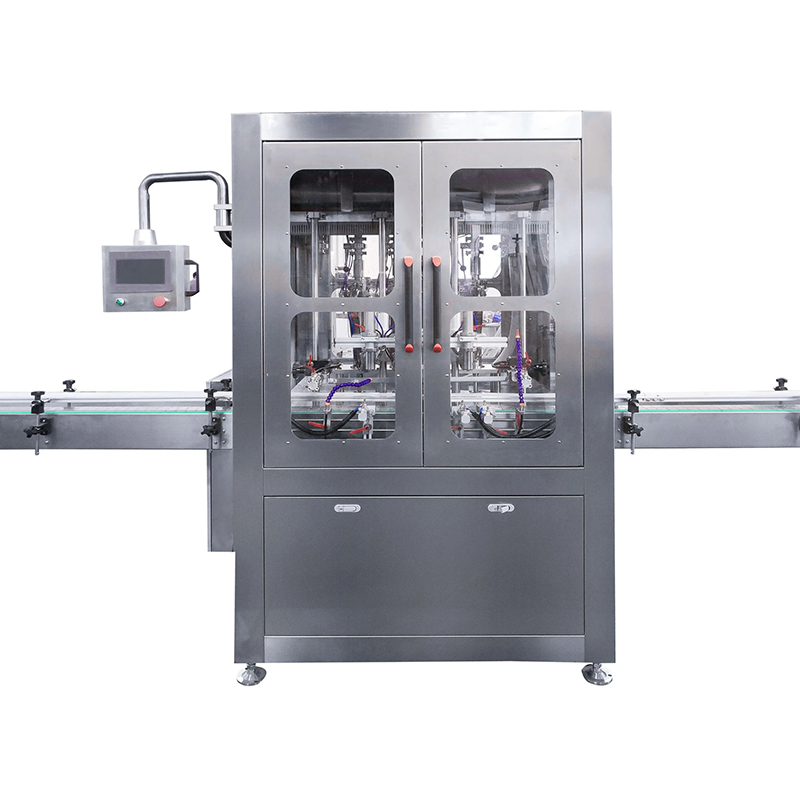
How does a four head liquid filling machine work?
Four head liquid filling machines work by using a combination of mechanical and pneumatic components to dispense precise amounts of liquid into containers. The basic process involves the following steps:
- Liquid is poured into a hopper or tank located at the top of the filling machine.
- The liquid is then drawn into a pump or valve system, which controls the flow of liquid to the filling nozzles.
- The filling nozzles, or heads, dispense the liquid into the containers as they pass underneath on a conveyor belt.
- The containers are then sealed and labeled, if necessary, before being packaged and shipped to customers.
Types of four head liquid filling machines
There are several types of four head liquid filling machines available on the market, each designed to meet the specific needs of different industries and applications. Some of the most common types of four head liquid filling machines include:
- Piston filling machines: These machines use a piston to dispense precise amounts of liquid into containers. Piston filling machines are commonly used for viscous liquids, such as sauces and syrups.
- Gravity filling machines: These machines use gravity to dispense liquids into containers. Gravity filling machines are typically used for low-viscosity liquids, such as water and juices.
- Volumetric filling machines: These machines use a measurement system, such as a calibrated cylinder or gauge, to dispense precise volumes of liquid into containers. Volumetric filling machines are commonly used for liquids with consistent viscosities, such as chemicals and pharmaceuticals.
- Net weight filling machines: These machines use a scale to dispense precise amounts of liquid based on weight. Net weight filling machines are commonly used for liquids with inconsistent viscosities, such as food products.
Benefits of using a four head liquid filling machine
There are many benefits to using a four head liquid filling machine in a production environment, including:
- Increased efficiency: Four head liquid filling machines can fill multiple containers simultaneously, which can significantly increase the speed and efficiency of the filling process. This can help to reduce production times and costs, and increase the overall profitability of a business.
- Enhanced accuracy: Four head liquid filling machines are equipped with precise filling nozzles or heads that are designed to dispense consistent amounts of liquid. This helps to ensure that each container is filled with the same amount of liquid, reducing waste and improving product quality.
- Improved safety: Four head liquid filling machines are automated, which means that they can be operated by a single worker. This can help to reduce the risk of accidents and injuries in the workplace, as well as the need for manual handling of hazardous liquids.
- Greater flexibility: Four head liquid filling machines can be easily adjusted to accommodate different container sizes and shapes, as well as different types of liquids. Thisis useful for businesses that produce a variety of products, as it allows them to use the same filling machine for all of their products, rather than having to purchase multiple machines.
Choosing the right four head liquid filling machine
There are several factors to consider when choosing a four head liquid filling machine, including the type of liquid being filled, the volume of production, and the size and shape of the containers. Other important factors to consider include the following:
- Filling accuracy: It is important to choose a machine with a high level of filling accuracy to ensure that the right amount of liquid is dispensed into each container. This will help to reduce waste and improve the overall quality of the product.
- Speed of production: If you need to fill a large volume of containers, it is important to choose a machine with a high filling speed to keep up with demand. However, if you are filling smaller volumes, a slower filling speed may be sufficient.
- Ease of use: It is important to choose a machine that is easy to operate and maintain, to minimize downtime and maximize productivity. Look for a machine with clear instructions and a user-friendly interface.
- Safety features: If you are filling hazardous liquids, it is important to choose a machine with appropriate safety features, such as overflow protection and leak detection.
Maintenance and upkeep of a four head liquid filling machine
Proper maintenance and upkeep of a four head liquid filling machine is essential to ensure that it operates safely and efficiently. Some key maintenance tasks to consider include:
- Regular cleaning: It is important to keep the machine clean to prevent contamination of the product and to extend the life of the machine. This may involve using cleaning agents and solvents, as well as regular mechanical cleaning.
- Lubrication: Regular lubrication of the machine's moving parts is essential to reduce friction and wear. It is important to use the correct lubricants and to follow the manufacturer's recommended lubrication schedule.
- Calibration: It is important to regularly calibrate the filling nozzles or heads to ensure that they are dispending the correct amount of liquid. This may involve using calibrated test containers or a calibration tool.
- Inspection and repair: Regular inspection of the machine is essential to identify any potential issues and to ensure that it is operating safely and efficiently. If any issues are identified, it is important to repair them as soon as possible to minimize downtime and extend the life of the machine.
Conclusion
Four head liquid filling machines are an essential piece of equipment in many industries, including food, pharmaceutical, and cosmetics. They are designed to fill multiple containers simultaneously, increasing the speed and efficiency of the filling process. When choosing a four head liquid filling machine, it is important to consider the type of liquid being filled, the volume of production, and the size and shape of the containers. Proper maintenance and upkeep of the machine is also essential to ensure that it operates safely and efficiently.

